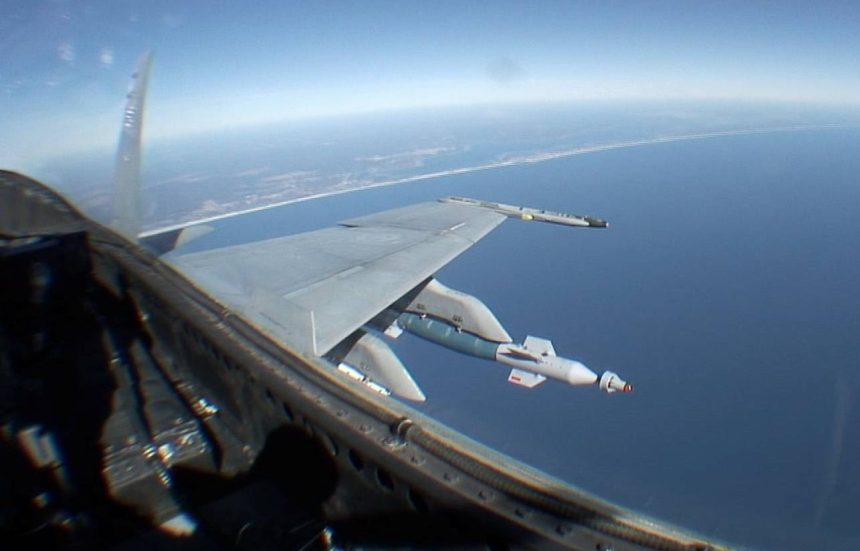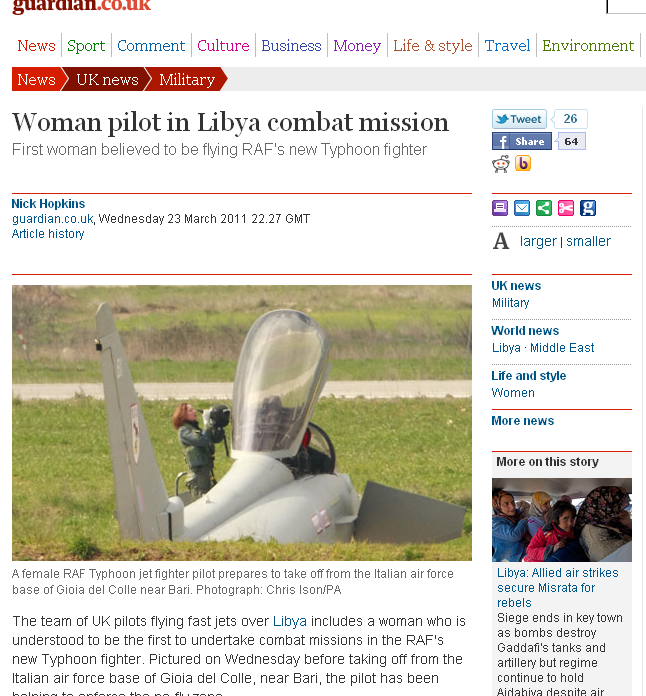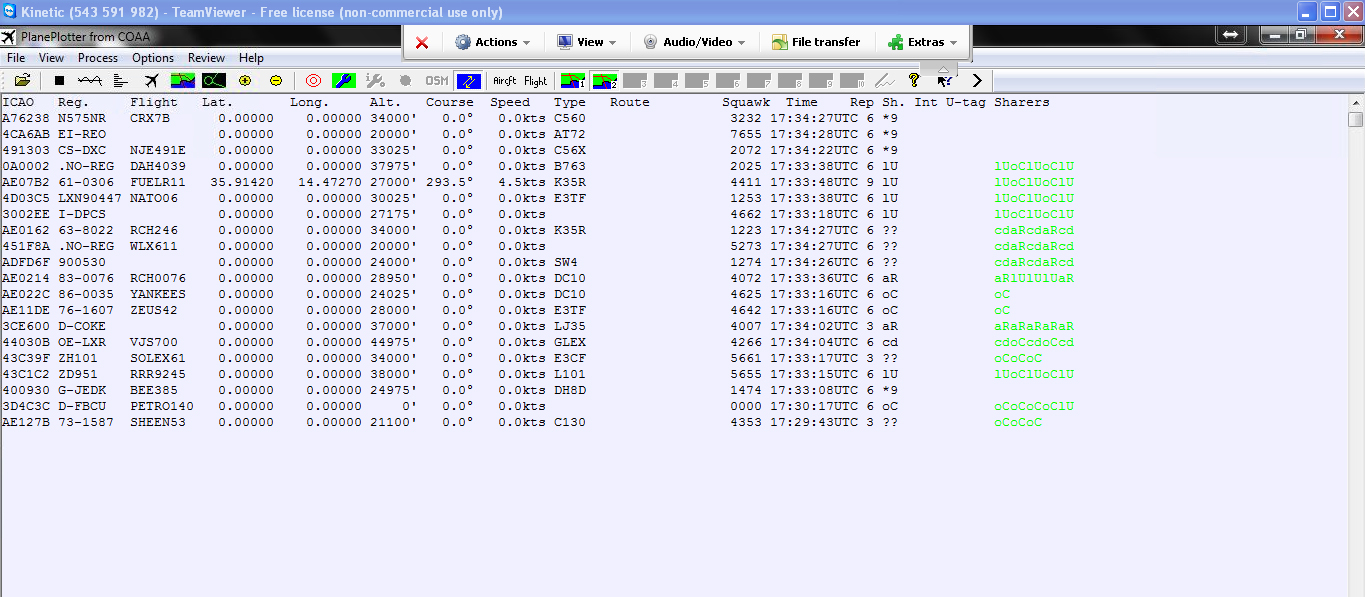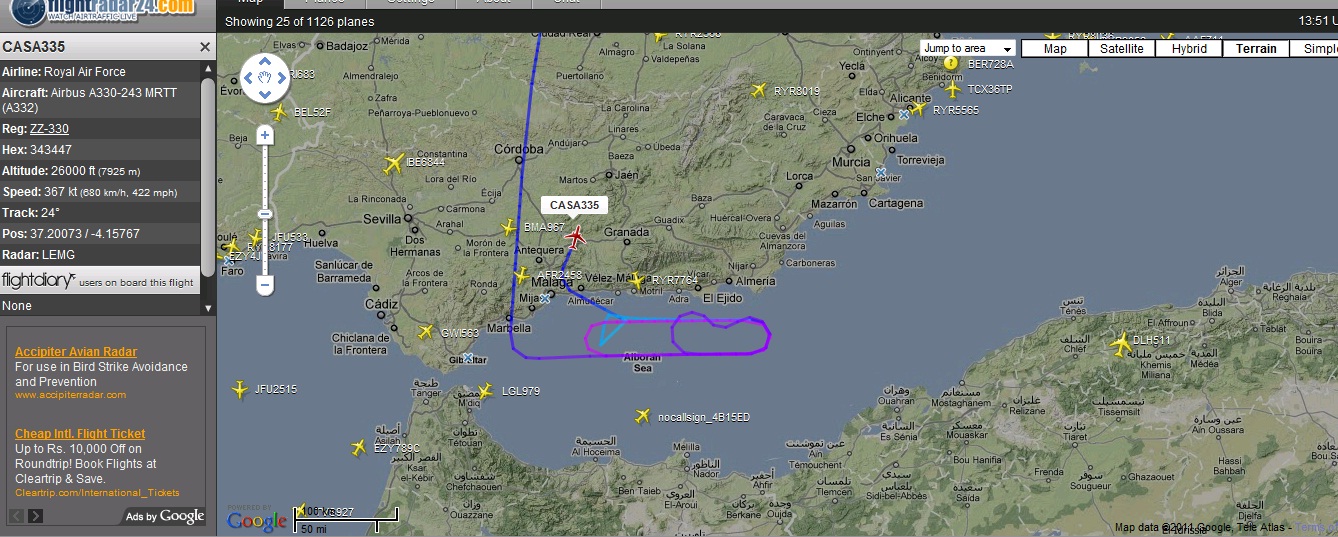Previous debriefings:
The news of Day 5 is that the Libyan Arab Republic Air Force “no longer exists as a fighting force”, a statement that impressed both media and public opinion and that was frantically retweeted on Twitter from around 16.00GMT (I’m still getting the “breaking news” around 23.50GMT). Actually, we already knew that Libyans had a largely obsolete fleet flown by scarcely trained crews and that they were equipped with a variety of old Soviet surface-to-air weaponry meaning that I didn’t expect LARAF to be as effective as it could be in the ’70s or ’80s to pose a real threat to the coalition planes. So, when I read the words the commander of Royal Air Force Operation Bellamy had said in Gioia del Colle during a visit to the RAF detachment, I didn’t find them particularly interesting. What I really found noteworthy were his next words (widely underrated and omitted): “….his integrated air defense system and command and control networks are severely degraded to the point that we can operate with near impunity across Libya”. When thinking to the way the air campaign had developed until Day 4, I couldn’t explain why coalition planes weren’t operating in the eastern part of the country and thought it was because SAM risk around Tripoli was high. Obviously, basing on the the words by Air Vice Marshal Greg Bagwell, backed by BBC News reports mentioning that no aircraft was ever launched and no Air Defence radar has ever been “switched on”, that wasn’t the reason.
Actually, we already knew that Libyans had a largely obsolete fleet flown by scarcely trained crews and that they were equipped with a variety of old Soviet surface-to-air weaponry meaning that I didn’t expect LARAF to be as effective as it could be in the ’70s or ’80s to pose a real threat to the coalition planes. So, when I read the words the commander of Royal Air Force Operation Bellamy had said in Gioia del Colle during a visit to the RAF detachment, I didn’t find them particularly interesting. What I really found noteworthy were his next words (widely underrated and omitted): “….his integrated air defense system and command and control networks are severely degraded to the point that we can operate with near impunity across Libya”. When thinking to the way the air campaign had developed until Day 4, I couldn’t explain why coalition planes weren’t operating in the eastern part of the country and thought it was because SAM risk around Tripoli was high. Obviously, basing on the the words by Air Vice Marshal Greg Bagwell, backed by BBC News reports mentioning that no aircraft was ever launched and no Air Defence radar has ever been “switched on”, that wasn’t the reason.
According to the Pentagon, 336 sorties and 108 raids were flown since the beginning of Odyssey Dawn. 21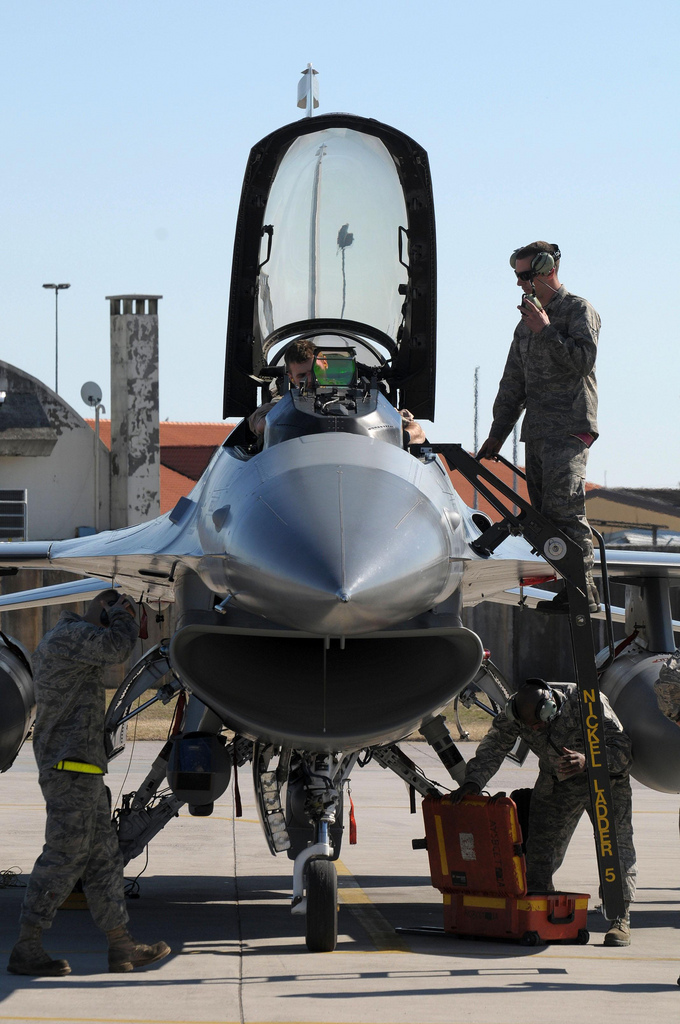
As the battlespace was shaped to enable a safe usage by the coalition aircraft, the type of missions that will be flown in the next days will not change that much. There will be strikes, reconnaissance missions, combat air patrols (fewer, given the absence of significant aerial threats) and, needless to say, SEAD. In fact, even if the Libyan IADS (Integrated Air Defence System) should be almost unserviceable, this doesn’t implies that the overflown areas are clear of mobile SAM (Surface to Air Missile) stations. For this reason, while flying almost undisturbed within the No-Fly Zone allied aircraft will still have to rely on precious SEAD assets, whose threatening presence should persuade loyalists to keep their radars off unless they want to get a direct hit by an AGM-88 HARM (High-speed Anti-Radiation Missile). More or less in the same way since Vietnam war, these planes (EA-18G Growler, F-16CJ and Tornado ECR in this theatre of operation, plus some other types that can carry the AGM-88 but can’t be considered specialized SEAD p
Other interesting things, information and thoughts:
1) USMC unveiled some interesting details about the rescue mission of one of the crew members of the USAFE F-15E crashed 40 km east of Benghazi. The mission flown by the USMC was a TRAP (Tactical Recovery of Aircraft and Personnel) and not a CSAR: the first is “a planned recovery of personnel or equipment of your own operations located in your own area of responsibility”, the latter is “a planned rescue mission of distressed personnel anywhere in a joint theater”. What makes the difference is the lethality of the scenario: CSAR missions are flown in high-lethality ones, TRAP are those flown in medium to low-lethality ones, as the Libyan one. That said, the rescue mission involved 6 aircraft: 2 MV-22s, 2 CH-53E carryng quick reaction force personnel, and 2 AV-8B Harrier II. The rescue package was launched within 30min of the crash, when the ship was 130 NM from the crash site. On arrival, the AV-8Bs dropped two LGBs before one of the Osprey tilt-rotors landed to recover the pilot. 90 minutes of the mishap, the Osprey landed aboard the USS Kearsarge. The wreckage of the F-15E was later bombed to prevent some pieces of it from going in the wrong hands.

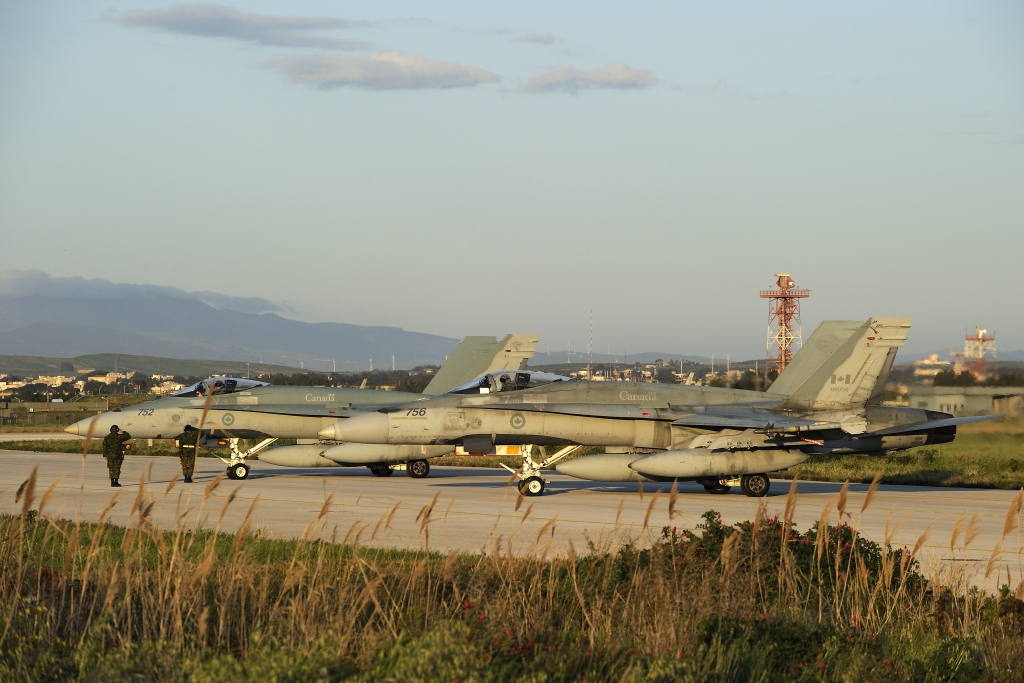
There were confirmed news of a strike performed by the Canadians using Laser Guided Bombs (LGBs) and PGMs (either JDAM or LGBs) dropped for the first time by Danish F-16s deployed to Sigonella.
3) Many female pilots are involved in the operation flying tactical planes. During the last two days a RAF one flying Typhoon from Gioia del Colle as well as an Italian one flying the Typhoon from Trapani were interviewed/photographed and somehow made the news.
4) After explaining in my previous debrief that there was the possibility to track the Canadian CC-150 (A310) tanker because it broadcasted full ADS-B information, I was informed by many readers that “Petrol” was no longer visible on Flightradar24. 
5) Dealing with tankers and ADS-B many visitors sent me the screenshot taken from flightradar24 showing what they thought were some suspicious orbits flown by the A330MRTT tanker using callsign “Casa 335”. Someone guessed the EADS tanker flying orbits in that position was refueling some bomber coming from the US in a Global Power mission for Odyssey Dawn. However, the one tracked via ADS-B was the RAF example; as far as I known, none of the RAF tankers will be fitted with the Aerial Refueling Boom System (ARBS) as all the British tankers will be fitted with 2 Cobham 905E underwing pods and 7 will be fitted with a Cobham 805E Fuselage Refuelling Unit, so I’m pretty sure the aircraft was simply involved in a test flight of air-to-air refueling with the probe and drogue system (maybe with some SpAF plane, given the position of the orbit).

